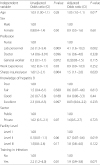1. United State Public Health Service (2001). "Updated U.S. Public Health Service guidelines for the Management of Occupational Exposures to HBV, HCV, and HIV and recommendations for Postexposure prophylaxis." MMWR Recomm Rep: 10.
2. Advisory Committee on Immunization Practices (1997). "Immunization of health-care workers: recommendations of the advisory committee on immunization practices " MMWR (10): 213.
3. World health organization. (2013). "Vaccine recommendations for health workers." Retrieved 10th Febuary, 2015.
4. National Institute for Occupational Safety and Health. (1999). Retrieved 19th April, 2015.Ott, J. J., G. A. Stevens, J. Groeger and S. T. Wiersma (2012). "Global epidemiology of hepatitis B virus infection: New estimates of age-specific HBsAg seroprevalence and endemicity." Vaccine 30(12): 2212–2219.
5. Centre for disease control. (2014, 12th January 2014). "Hepatitis B vaccine." Retrieved 13th Febuary, 2015.
6. Centre for disease control. (2012). "Hepatitis in Africa." Retrieved 10th Febuary, 2015.
7. WEBMD. (2014). "Hepatis B as an occupational hazard." retrieved 20th January, 2015.
8. Hamid, S. and W. Faisal (2011). "Hepatitis and the Healthcare worker. A Pakistani Perspective." JCPSP5(215): 785.
9. Aziz S, Memon A, Tily H. Prevalence of HIV, hepatitis B and C amongst health workers of civil hospital. J Pak Medical Association. 2006; 2(15):302.
10. Phillips, E. K., O.J. Simwale, M. J. Chung, G. Parker, J. Perry and J. C. Jagger (2012). "Risk of bloodborne pathogen exposure among Zambian healthcare workers." J Infect Public Health 5(3): 244–249.
11. Khan FY, Ross AJ.
Hepatitis B immunisation amongst doctors and laboratory personnel in KwaZulu-Natal
. 2013. South: Africa.
12. Ziraba A, Bwogi J, Namale A, Wainaina C, Mayanja-Kizza H. Sero-prevalence and risk factors for hepatitis B virus infection among health care workers in a tertiary hospital in Uganda. BMC Infect Dis. 2010; 10(1):191. DOI:
10.1186/1471-2334-10-191. PMID:
20587047.
13. Heshan, R. and S. Zamberi (2005). "Hepatitis B immunizations among health Care Workers in two Kuala Lumpur Hospitals." Med J Malays 15(300–302).
14. Ouedraogo HG, Kouanda S, Tiendrebeogo S, Konseimbo GA, Yetta CE, Tiendrebeogo E, Sondo B. Hepatitis B vaccination status and associated factors among health care workers in Burkina Faso. Medecine et santé tropicales. 2012; 23(1):72–77.
15. Burnett RJ, Francois G, Kew MC, Leroux-Roels G, Hoosen M. Hepatitis B virus and human immunodeficiency virus co-infection in sub-Saharan Africa; a call for further investigation. Liver Int. 2005; 25(2):201–213. DOI:
10.1111/j.1478-3231.2005.01054.x. PMID:
15780040.
16. Simard, E.P., Miller, J. T., George, P. A., Wasley, A., Alter, M. J., Bell,B.P., and Finelli, L. (2007). “Hepatitis B vaccination coverage levels among heath care workers in the United States, 2002-2003.” Infect Control Hosp Epidemiol, 28(07), 783–790.
17. Loulergue p, Moulin F, Vidal-Trecan G. Knowledge, attitudes and vaccination coverage of healthcare workers regarding occupational vaccinations. Vaccine. 2009; 27(31):4240–4243. DOI:
10.1016/j.vaccine.2009.03.039. PMID:
19481314.
18. Ogoina D; I.M.I.E., Pondei K, Adetunji B, Chima G, Isichei C, Gidado S. Prevalence of hepatitis B vaccination among health care workers in Nigeria in 2011–12. Int J Occuppational Enviromental Med. 2014; 5(1 Januray):362–351.
19. Janjua NZ, Khan MI, Mahmood B. sharp imjuries and their determinants among health care workers at first-level care facilities in Sindh Province, Pakistan. Trop Med Int Health. 2010; 15(10):1244–1251. DOI:
10.1111/j.1365-3156.2010.02610.x. PMID:
20667046.






